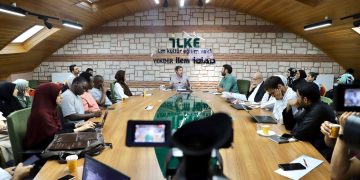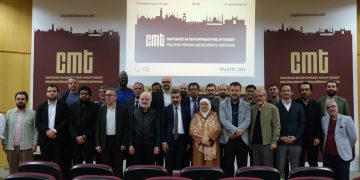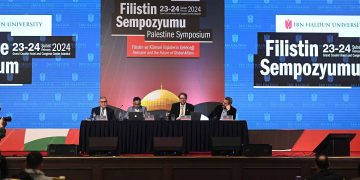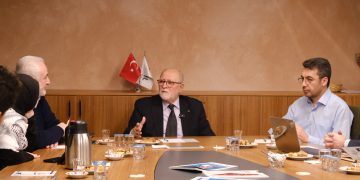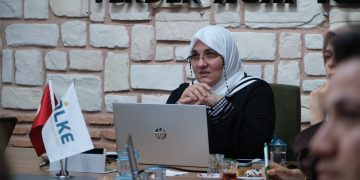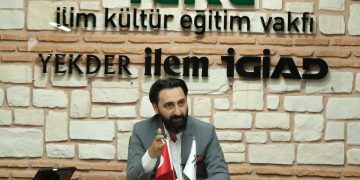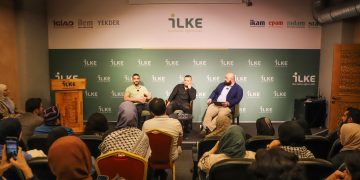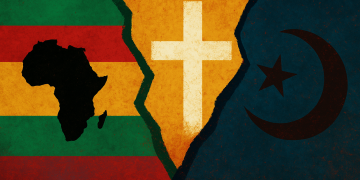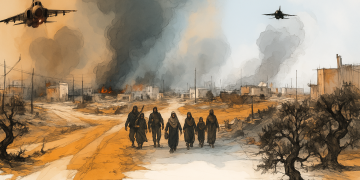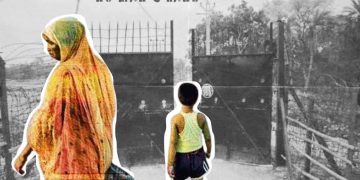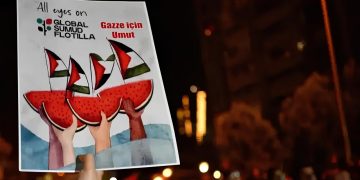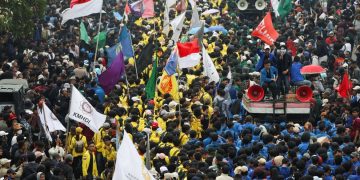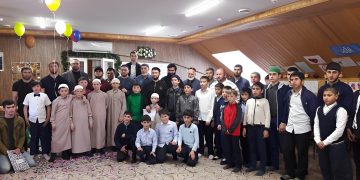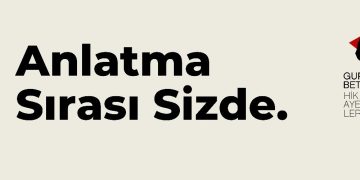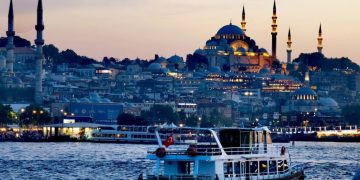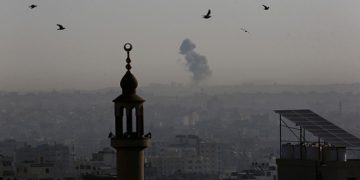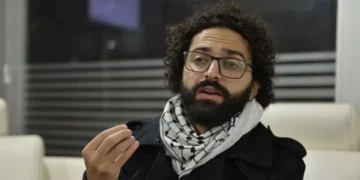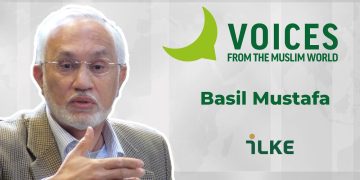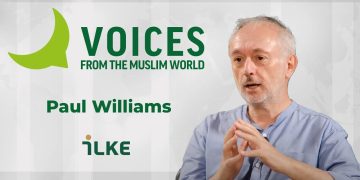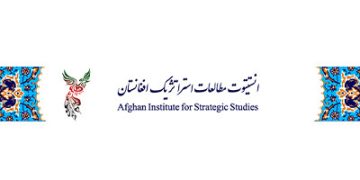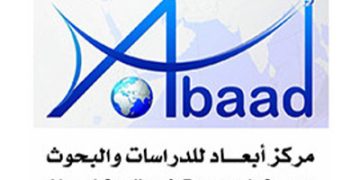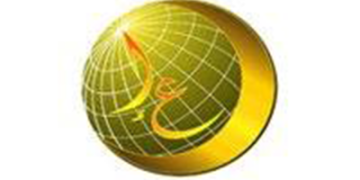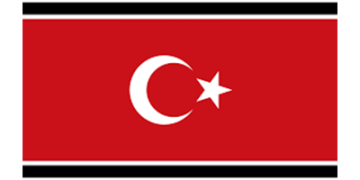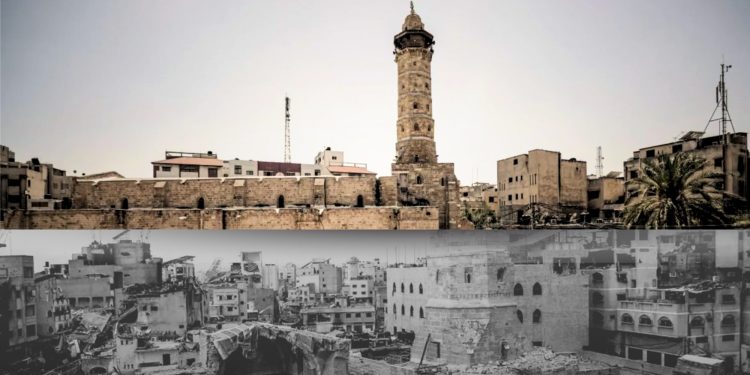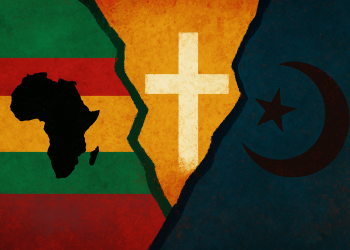The Gaza Strip, home to a rich and continuous archaeological heritage dating back to the Neolithic period, has suffered massive cultural devastation during the 2023–2025 military offensive. More than 70% of Gaza’s cultural heritage sites—including mosques, historic buildings, and archaeological landmarks—have been damaged or destroyed, representing not only material loss but a systematic erasure of Palestinian identity and memory.
Layers of Time: Exploring the Rich Archaeological Heritage of the Gaza Strip
Cultural heritage embodies the identity, history, and collective memory of a nation, serving as a crucial link across generations and contributing to a community’s sense of continuity and belonging. Extensive fieldwork conducted over the past two centuries has established that permanent settlement in this region began during the Late Neolithic period and has persisted without interruption to the present day (Al-Houdalieh, Abu al-Saud & Warasneh, 2024). According to a comprehensive inventory compiled in 2019 by Palestinian archaeologists in collaboration with UNESCO, the region is home to 354 archaeological sites (Figure 1) and historical buildings. Of these, 86 are archaeological sites spanning various pre-historic and historic periods, while the remainder consists of significant historical monuments and structures (Andreou et al., 2024, p. 15; Al-Houdalieh, Abu al-Saud & Warasneh 2024). These cultural assets hold substantial historical, scientific, architectural, aesthetic, and religious importance, reflecting the region’s rich and complex heritage. They provide valuable insights into the diverse civilizations that have shaped the cultural landscape over millennia and underscore the enduring relevance of heritage preservation in safeguarding collective identity.
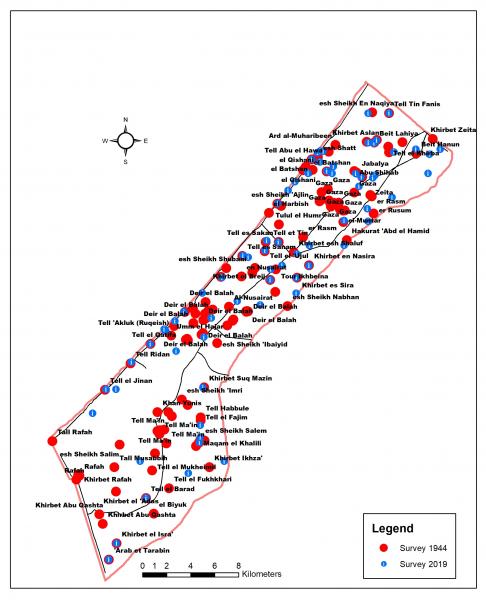
Figure 1: Distribution of Archaeological Sites in the Gaza Strip
Source: Taha, 2024.
Tracing the Footprints of Wars and Political Conflict in the Gaza Strip through the Ages
The Gaza Strip has served as both a crossroads of civilizations and a battleground for numerous conflicts throughout recorded history. Its strategic location has made it a contested region for millennia, with successive empires and military powers leaving behind archaeological and historical evidence of conquest, occupation, and resistance. During the Late Bronze Age, the region was invaded and controlled by the Egyptian New Kingdom, followed by incursions from the Philistines (Sea Peoples), Assyrians, Babylonians, and Persians. Later, it came under the control of the Romans and Byzantines, followed by the Islamic conquest led by Amr ibn al-As in 637 A.D. Subsequently, the region experienced further conflicts and rule under the Crusaders, Ayyubids, Mamluks, Ottoman-Turks, and the British during the Mandate period (Al-Khoudary, 2019).
Following the establishment of the State of Israel in 1948, the Gaza Strip was administered by Egypt until the 1967 Arab-Israeli War, after which Israel occupied and controlled the territory. This occupation persisted until 1994, when the Palestinian National Authority was established as a product of the Oslo Accords. In 2005, Israel withdrew its military forces and settlers from the Gaza Strip, ending nearly 40 years of direct occupation. However, in 2007, the political separation between the West Bank and Gaza occurred, resulting in the Gaza Strip coming under the control of the Hamas movement (Al-Houdalieh, 2010, p. 32). In June 2007, the Israeli authorities significantly intensified existing movement restrictions, effectively isolating the Gaza Strip from the rest of the Palestinian territories and the global community. Over the past 17 years, the Gaza Strip has also endured five large-scale military operations by Israeli military forces, occurring in 2008–2009, 2012, 2014, 2021, and most recently from 2023 to 2025. The combined effects of the prolonged blockade and repeated military assaults have entrenched economic decline, exacerbated poverty, and deepened humanitarian crises within the Gaza Strip.
The parallels between Gaza’s ancient and modern history are striking, underscoring the region’s enduring legacy of resistance and resilience in the face of conquest and occupation. Throughout its history, Gaza has been the target of numerous military campaigns, one of the most notable being Alexander the Great’s siege of the city in the late fourth century B.C.E. Following the fall of Tyre, Gaza stood as the only city in Palestine that refused to submit to Alexander’s advance. Confident in the city’s defenses, Gaza’s governor, Batis, defied Alexander, stating that the city “could never be taken by storm” (Arrian, 1971). Gaza presented a formidable challenge to Alexander’s military forces. The siege of the city proved to be both prolonged and arduous, during which Alexander himself sustained a serious shoulder injury. Angered by the city’s resistance and his personal injury, Alexander escalated the assault until his army eventually breached Gaza’s defenses. In a ruthless act of retribution, Alexander executed the city’s male population, enslaved the women and children, and had Batis gruesomely killed by dragging him through the city behind a horse. To solidify his control, Alexander repopulated Gaza with settlers from surrounding regions and fortified it to support his conquests in Egypt (Al-Khoudary, 2019).
In recent history, the Gaza Strip endured a disturbingly similar scenario during the 2023–2025 military aggression. Israeli Prime Minister Benjamin Netanyahu orchestrated a campaign that mirrored the tactics and outcomes of Alexander’s conquest. Gaza suffered extensive destruction, with its leadership targeted and killed, and large portions of the population killed, displaced, or imprisoned. On February 5, 2025, U.S. President Donald Trump exacerbated the situation by publicly announcing a plan to seize the Gaza Strip and repopulate it, referring to the proposed transformation of the area as the “Riviera of the Middle East.” This plan reflects a continuing strategy of conquest, displacement, and demographic restructuring, bearing a striking resemblance to ancient patterns of domination and control.
Gaza’s Cultural Heritage between Hammer and Anvil: The Enduring Impact of Recent Aggression
The military offensive on the Gaza Strip, which began in October 2023 and continued for over 470 days as of the completion date of this paper—with the exception of a brief ceasefire from November 24 to December 1, 2023—has led to widespread devastation across numerous sectors. Cultural heritage resources, educational and residential buildings, hospitals, infrastructure, transportation networks (Figure 3), water and sanitation facilities, as well as both urban and agricultural landscapes, were severely affected. According to press release No. 749 issued by the Government Media Office in Gaza, as of February 2, 2025, the conflict had claimed the lives of over 61,709 individuals. Of these, 47,487 were confirmed deceased upon arrival at hospitals, while 14,222 remained missing beneath the rubble. Additionally, the number of injured reached 111,588 with approximately 2 million people displaced from their homes (Figure 4) (Government Media Office, 2025). Among the victims of this prolonged aggression were numerous cultural heritage practitioners who had been actively engaged in the exploration, safeguarding, management, and conservation of Gaza’s heritage resources. Their loss represents not only a significant human tragedy but also a critical blow to the preservation of the region’s cultural identity and historical continuity. The destruction of both tangible and intangible heritage underscores the broader impact of the conflict on Gaza’s societal foundations, further complicating efforts to recover and rebuild in its aftermath.
Among the victims of this prolonged aggression were numerous cultural heritage practitioners who had been actively engaged in the exploration, safeguarding, management, and conservation of Gaza’s heritage resources. Their loss represents not only a significant human tragedy but also a critical blow to the preservation of the region’s cultural identity and historical continuity.

Figure 2: Aerial photo shows the scale of urban landscape destruction of Gaza city as of January 20, 2025.
Source: Al Jazeera
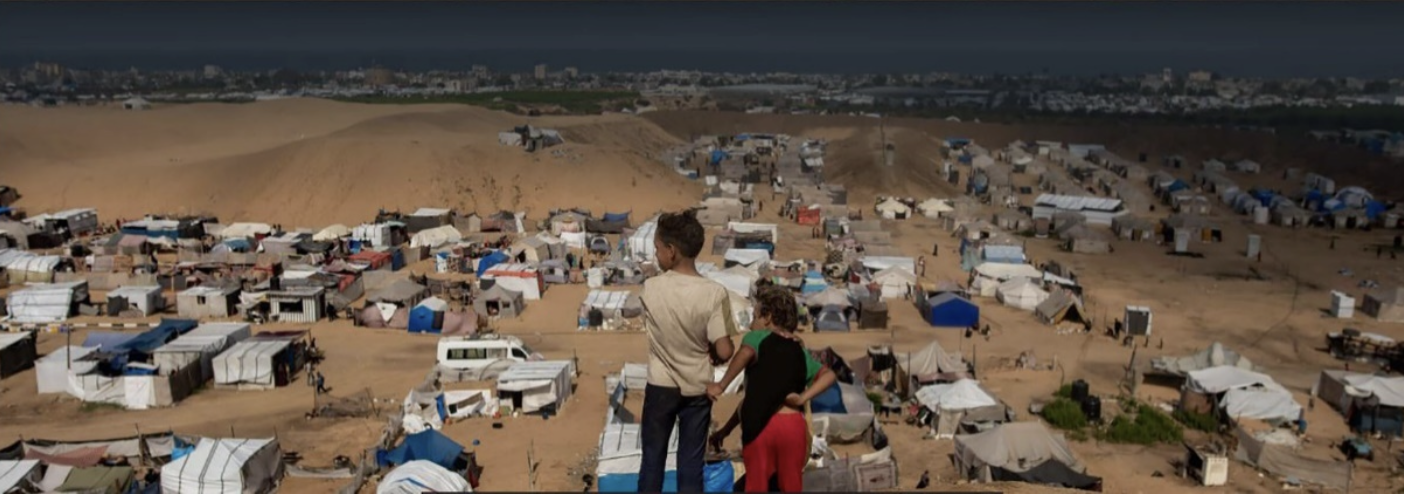
Figure 3: A Refugee camp for displaced people in Khan Younis, on September 22, 2024.
Source: Haitham Imad/EPA
Based on data collected by ICOMOS – Palestine and the Society of Palestinian Archaeology (where the author currently serves as Secretary General for both organizations), as well as recent findings published by the Center for Cultural Heritage Preservation (2025), preliminary conclusions indicate that 71.5% of the Gaza Strip’s cultural heritage resources have suffered varying degrees of damage and destruction. Of these, 43.5% experienced severe destruction, 19.5% sustained moderate damage, and 8.5% incurred minor damage. These heritage resources encompass archaeological sites, historical buildings from various periods, and museums housing thousands of archaeological artifacts, folkloric items, and other elements of material culture.
71.5% of the Gaza Strip’s cultural heritage resources have suffered varying degrees of damage and destruction.
The severely damaged archaeological sites and historical buildings are numerous and include prominent locations such as Tell al-‘Ajjul, Tell al-Sakan, Anthedon Harbour, Tell al-Sanam, Tell Rafah 2, Tell Ma’in, Khirbet al-Rasm, and the Roman cemetery of Jabaliyya. Additionally, key historical structures have been heavily affected, including the Great Omari Mosque (Figure 5), Hammam al-Samara, al-Basha Palace (Figure 6), al-Saqqa House, Seif Rajab House, the Rashad al-Shawa Cultural Center, the Khan Younis Railway, Othman Qashqar Mosque, Sheikh Zakariyya Mosque, Sabil al-Rifa’eyya, and the maqams and cemeteries of Ibn Marwan and Sheikh Ali Abu al-Kass.

Figure 4: The Great Omari Mosque. A. Before destruction. B: After destruction.
Source: Al-Houdalieh, Abu Al-Saud & Warasneh, 2024.
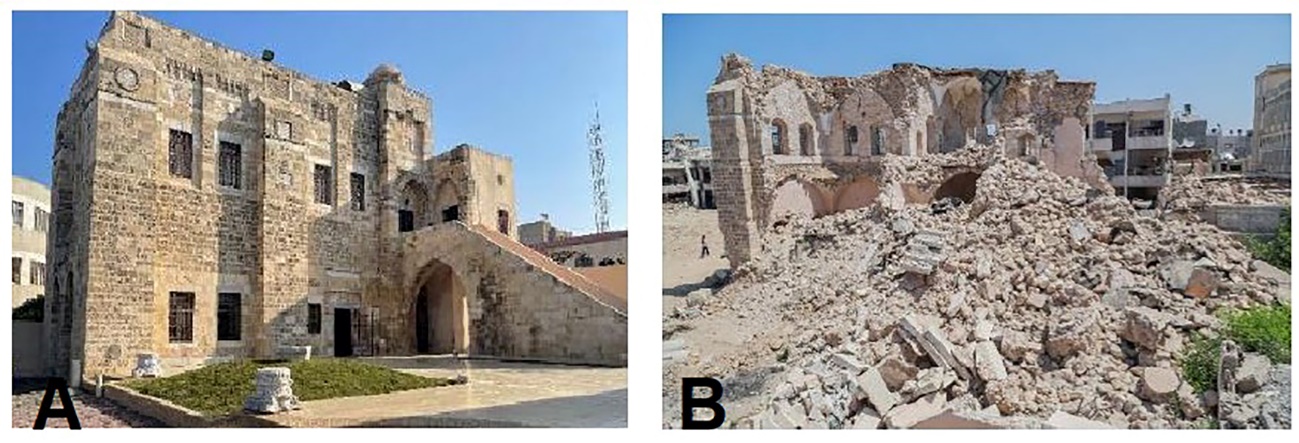
Figure 5: Al-Basha Palace. A. Before destruction. B. After destruction.
Source: Centre for Cultural Heritage Preservation
Conclusion
Memoricide—the simultaneous destruction of human life and the deliberate erasure of a people’s collective memory through the systematic targeting of cultural, historical, and religious landmarks, as well as the transformation of rural and urban landscapes—has become a deeply concerning aspect of the ongoing war on Gaza. The persistent attacks on archives, mosques, churches, residential houses, archaeological sites, and educational institutions extend far beyond material devastation. They constitute a strategic assault on the very foundations of Palestinian identity, heritage, and historical continuity. Within this framework, the war takes on not only territorial and humanitarian dimensions, but also epistemological and cultural ones, where the obliteration of memory functions as an instrument of erasure, dispossession, and control.
The war takes on not only territorial and humanitarian dimensions, but also epistemological and cultural ones, where the obliteration of memory functions as an instrument of erasure, dispossession, and control.
In this regard, he destruction of the Gaza Strip’s cultural heritage during the 2023–2025 aggression has been extensive, with a significant portion of archaeological sites, historical buildings, and cultural institutions either severely damaged or completely destroyed. This loss not only erases key elements of the region’s historical and cultural identity but also disrupts efforts to preserve its collective memory and legacy for future generations. Given the scale and severity of the damage, the role of international cultural heritage organizations is crucial. These organizations must intensify efforts to document, safeguard, and support the restoration of Gaza’s cultural resources through coordinated initiatives, technical expertise, and advocacy. Strengthening local capacity for heritage protection and promoting adherence to international conventions—such as the 1954 Hague Convention—are essential steps toward preventing further loss and ensuring that Gaza’s cultural heritage is preserved in the face of ongoing challenges.
References
Al-Houdalieh, S. (2010). Archaeological heritage and related institutions in the Palestinian National Territories 16 years after signing the Oslo Accords. Present Pasts, 2(1), 31–53.
Al-Houdalieh, S., Abu Al-Saud, L., & Warasneh, A. (2024). Heritage and conflict in Gaza. In Palgrave Encyclopedia of Cultural Heritage and Conflict (pp. 1–17). Palgrave Macmillan.
Al-Khoudary, Y. (2019). Gaza’s historical cycles of prosperity and destruction: Is the present an aberration? In H. Yacobi & M. Nasasra (Eds.), Routledge Handbook on the Middle East (pp. 89–103). Routledge.
Andreou, G., Fradley, M., Blue, L., & Breen, C. (2024). Establishing a baseline for the maritime cultural heritage in the Gaza Strip. Palestine Exploration Quarterly, 156(1), 4–42.
Arrian. (1971). The campaigns of Alexander. London: Penguin Classics.
Centre for Cultural Heritage Preservation. (2025). Damage and risk assessment of cultural heritage under attack in the Gaza Strip. Bethlehem: Centre for Cultural Heritage Preservation.
Government Media Office. (2025, February 3). Press release No. 749. Retrieved from https://arabic.news.cn/20250203/82815c5ebe294713b5f95f2d7d94616f/c.html
Taha, H. (2024). Destruction of Gaza’s cultural heritage. Institute for Palestine Studies, 31, 1–25.

